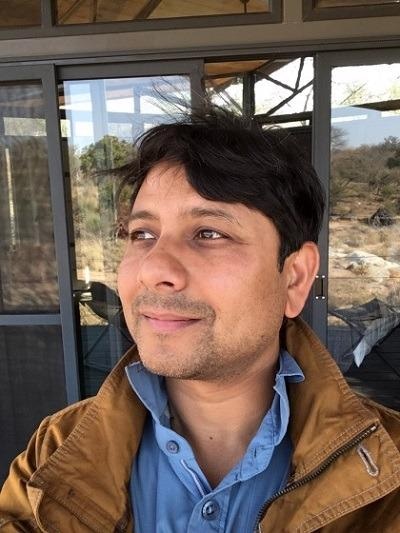Jun 7 2021
A new quantum interferometer on an atom chip has been created by physicists in Israel. This device can be utilized to investigate the basics of quantum theory by exploring the interference pattern present between two beams of atoms.
 This is Anupam Mazumdar, Professor of Theoretical Physics at the University of Groningen, co-author of the paper in Science Advances. He aims to develop a test for quantum gravity using atom chips. Image Credit: University of Groningen.
This is Anupam Mazumdar, Professor of Theoretical Physics at the University of Groningen, co-author of the paper in Science Advances. He aims to develop a test for quantum gravity using atom chips. Image Credit: University of Groningen.
Anupam Mazumdar, a physicist from the University of Groningen, explained how the new device could be adapted to use mesoscopic particles rather than atoms. This alteration would enable extended applications.
An illustration of the device, and theoretical considerations regarding its application by Mazumdar, were published in the Science Advances journal on May 28th, 2021.
The device, which was created by researchers from the Ben-Gurion University of the Negev, is a supposed Stern Gerlach Interferometer, which was initially suggested 100 years ago by German physicists Otto Stern and Walter Gerlach.
The researchers’ original aim was to create an interferometer that has freely propagating atoms exposed to gradients from macroscopic magnets but this has not been practically achieved until now.
Such experiments have been done using photons, but never with atoms.
Anupam Mazumdar, Study Co-Author and Professor of Theoretical Physics, University of Groningen
Mazumdar’s article was published in the Science Advances journal.
Diamonds
Under the guidance of Professor Ron Folman, the Israeli scientists produced an interferometer on an atom chip, which can limit and/or exploit atoms. With the help of magnets, a beam of rubidium atoms is levitated across the chip and magnetic gradients are utilized to divide the beam as per the spin values of the separate atoms.
A spin is essentially a magnetic moment that can contain two values, either up or down. The spin-down and spin-up atoms are isolated by a magnetic gradient. Later, the two divergent beams are again brought together and recombined.
The spin values are quantified, and an interference pattern is created. Spin is essentially a quantum phenomenon, and the conflicting spins are tangled throughout this interferometer. This renders the interferometer sensitive to other quantum phenomena.
Mazumdar did not contribute to chip construction, but he played a role in theoretical insights to the article. Along with several collaborators, Mazumdar earlier suggested an experiment to find out if gravity is indeed a quantum phenomenon using entangled mesoscopic objects, specifically small diamonds that can be brought in a quantum superposition state.
It would be possible to use these diamonds instead of the rubidium atoms on this interferometer.
Anupam Mazumdar, Study Co-Author and Professor of Theoretical Physics, University of Groningen
But this would be a highly complex process because the device, which is presently used at room temperatures, would need to be cooled down to about 1 K for the mesoscopic experiment.
Free Fall
If this is achieved, a couple of these atom chips could free fall jointly (to neutralize external gravity), so that any interaction taking place between them would rely on the gravitational pull present between the two chips.
The goal of Mazumdar and his collaborators is to find if the quantum entanglement of the pair takes place during free fall, which would imply that the gravitation force between the diamonds is indeed a quantum phenomenon. One more application of this experiment is gravity wave detection, whose distortion of space-time must be visible in the interference pattern.
While the real implementation of this experiment is still a long way to go, Mazumdar is quite excited about the interferometer that has been developed.
It is already a quantum sensor, although we still have to work out exactly what it can detect. The experiment is like the first steps of a baby –now, we have to guide it to reach maturity.
Anupam Mazumdar, Study Co-Author and Professor of Theoretical Physics, University of Groningen
Journal Reference:
Margalit, Y., et al. (2021) Realization of a complete Stern-Gerlach interferometer: Toward a test of quantum gravity. Science Advances. doi.org/10.1126/sciadv.abg2879.